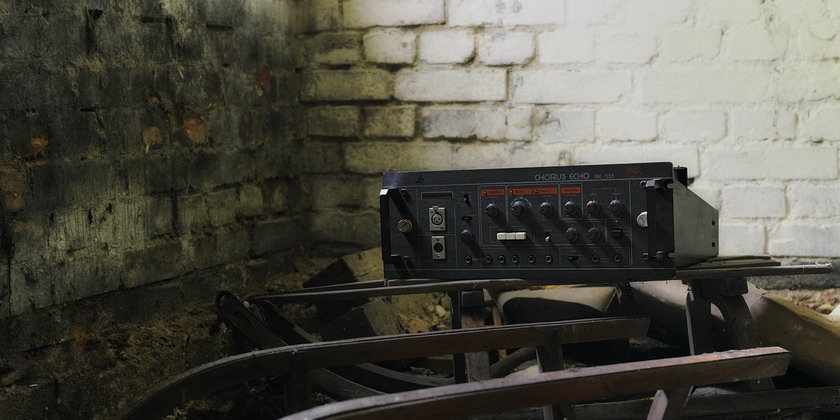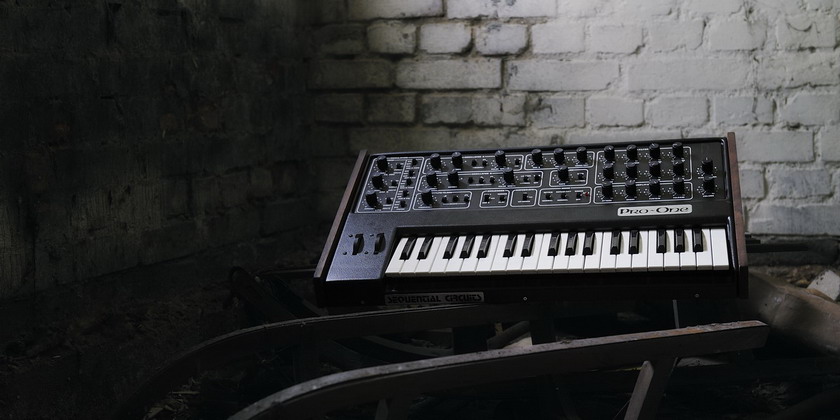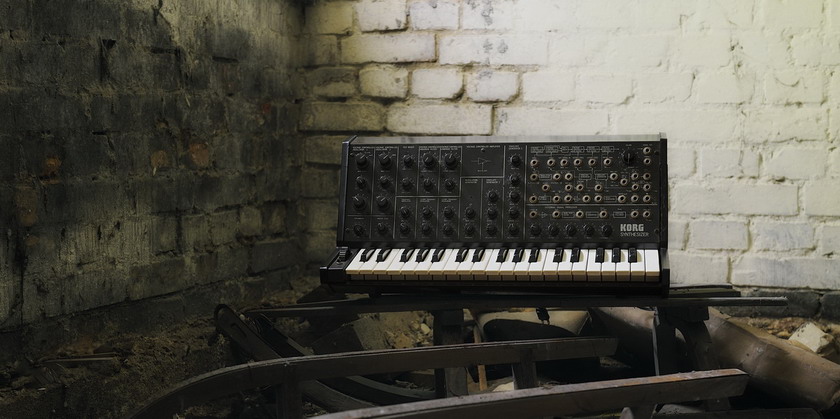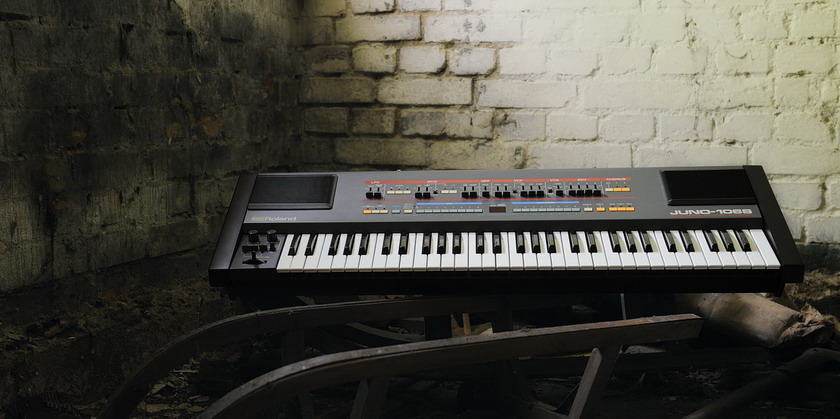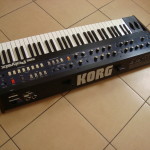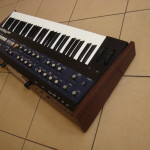Since a very exciting CPU board appeared in New Zealand, the Kiwisix, allowing for full MIDI control of all parametres, giving 1024 memory locations (!) and a million of other useful functions (arpeggiator will output MIDI data, how useful!), we are proud to offer the Kiwisix upgrade. Please look at (http://kiwitechnics.com/kiwisix.htm) for more information on Kiwitechnics’ great job.
With full MIDI control, 1024 memories and equipped with our effects in/out modification#, the P6 will now be a proper studio workhorse and worth every penny.
Price of a Polysix is 1000 EUR and includes all of the works listed. The cost of Kiwisix upgrade is ~450 EUR, including customs clearance and VAT.
General information about our works:
Contrary to P6s usually offered in Europe, our have been a subject to a major restoration project and there are currently no Polysixes superior to ours for sale in Europe. The list of services is unprecedented and comprises:
– installing the Kiwisix board
– disassembling and cleaning the keyboard to ensure problem-free performance
– replacing ALL switches in the programmer section.
– (on request) replacing the regular plywood case with superb quality wood.
– calibrating* the synth according to Korg Polysix’ service manual
#Furthermore, the P6 is equipped with effects input/output, allowing for independent use of Korg’s onboard analogue effects processor. In other words, you are getting an analogue effects unit for free and you do not even have to use it with Polysix signal – just plug in your external signal to “effects in” and take it from “effects out”. The effects board will become totally independent of the Polysix and you will be able to use the synthesizer (without effects) normally.
*as we are often asked what calibration is, here is our version: in simple terms, by calibrating we mean bringing back to factory settings, including equalising signal levels, filter and oscillator performance, etc. In yet another words, it something every seller of 20 – 30 years old gear should do, but very rarely does.
We do not always have them immediately available but we do our best to keep supplies so as to be able to prepare one for you on request.
Email for details and availability.
REGULAR PRICE:
1783 EUR including 23% VAT (=1450 EUR at 0% VAT).
Please click on the “Contact” tab in the top right corner of the page if you are not sure whether VAT applies to you.
THIS IS ONE OF OUR BEST SELLING PRODUCTS. PLEASE EMAIL TO CHECK AVAILABILITY AS IT MAY CHANGE UNEXPECTEDLY.
FREQUENTLY ASKED QUESTIONS
Q: Kiwisix or Tubbutec? Which upgrade should I go for?
A: If you are a ‘studio animal’ and can program your DAW with eyes closed, go for the Kiwi. With so many memory location you can program sounds and store them without fearing of ever running out of space plus all of the functions can be controlled over MIDI. However, if you are more of a performance-oriented musician and like to play with chords, harmonies and sequences that are quick to program and do not use computer all the time, go for Tubbutec as you might simply not make use of the extensive CC specification and 1024 memory locations.
Q: Polysix uses SSM ICs for the filter (SSM 2044) and envelope (SSM 2056) and some say they will drop like flies. Do they really fail that often?
A: The quick answer is NO. Over they years, well over 200 Polysixes passed through our workshop. Some were like new, some were literally taken out of a dumpster. Some were leaked to the point of being beyond rescue. But I have never seen a Polysix with all of those ICs dead. Also, which I believe is a statistically valid observation, there has NEVER been a case that our client reported that two (not to mention more) SSMs suddenly died in his Polysix. Of course it will happen once a year that a SSM dies but calling those ICs prone to failure is simply not true.
Q: Korg Polysix, Roland Juno-6, Juno-60 or 106? Which should I go for?
A: In Europe, you could ask whether Fanta is better than Orangina or Mirinda. Or whether bananas will work you you better than apples or grapes. There is no answer to this problem as it’s simply a bad question. All three instruments (Juno-6 and 60 is essentialy the same ‘audio engine’) sound different and the only unfailing method is to try them with your own ears. Never believe a person who says either is better. He may be right if he expresses his own preference but that is no general wisdom and should have no value for you, especially when making a choice.
Q: I have heard terrible stories about battery leaks in Polysixes and how they ruin the synthesizer. Will I be safe with this Polysix?
A: Yes, you definitely will, because you do not have the “leaking” board in your Polysix. The heart of the Kiwisix is a completely new CPU board that replaces the original. So there are NO leaks and there will be NO leaks in your Polysix. But to answer your question directly: the “leaking battery” is actually a blue VARTA time bomb, sitting right in the middle of a Polysix. It’s a huge omission on Korg’s part because the manual does not state that the battery should be replaced. The result? Terrible, really terrible leaks over the entire CPU board that are extremely time consuming to repair. They require so much work, that we have stopped repairing Polysixes some time ago and our “Tubbutec” equipped Polysixes have a brand new clone of this board. But again, this drama does not affect you and your Polysix.








